Architect Daniel Libeskind has created a luminaire for Zumtobel as part of the brand’s Masterpieces series.
January 23rd, 2012
Debuting at Art Basel Miami Beach in December 2011 was the latest in lighting company Zumtobel’s Masterpieces, a series of collaborations with architects, designers and artists resulting in unique cutting-edge pieces.
The eL Masterpiece was designed by Polish-born architect Daniel Libeskind along with his astrophysicist son Dr Noam Libeskind, who developed an algorithm for lighting patterns on the luminaire that represent the development of the universe.
“I wanted to design a truly unique object, one that gives off light in a way that is natural, that encapsulates the complexity and interesting quality of the very light that surrounds us,” said Libeskind (Senior) of the project.
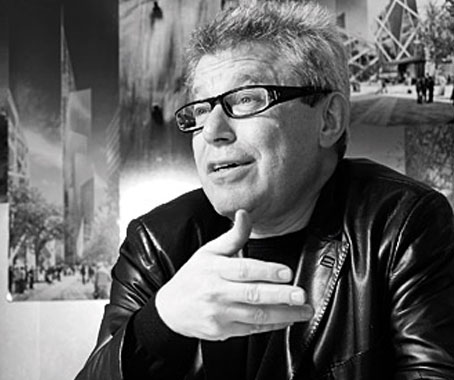
Daniel Libeskind
“I wanted my design to not simply be about the mechanism or the formalistic use of light, but instead about creating a truly new experience that will add a dimension to the demonstration of the mystery, wonder and beauty of light.”
The 2.7 metre structure features steel finishes, an interior coated in 23 carat gold, and 1680 specially-made LED modules, each with a built-in microcontroller, allowing it to be controlled individually. The light emitted by the LEDs aims to reproduce the cosmic light that fills the universe.
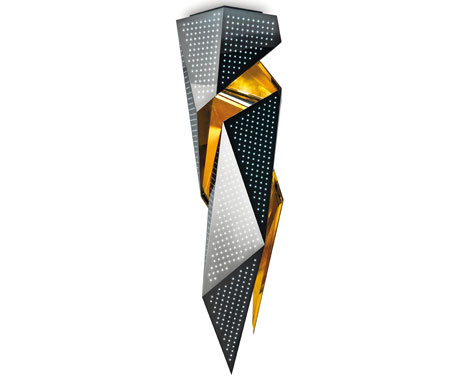
“We’re essentially trying to tell the history of light,” said Noam Libeskind of the concept. “How light in the universe evolved, how it was created, how it is absorbed and re-emitted and how, over 14 billion years, the light in the entire universe was changing and was in turn affecting the evolution of the universe.
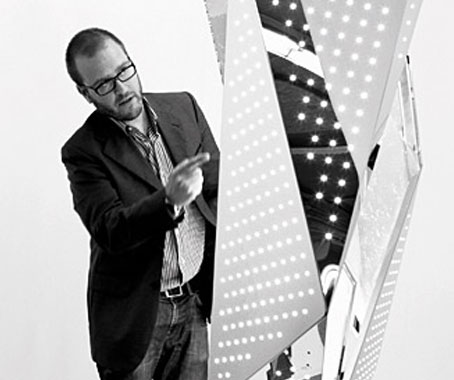
Dr Noam Libeskind with the eL Masterpiece
“We shaped a box representing a section of the universe, millions of light years across, and out of that box we took little portions and used LEDs on the luminaire for each of these portions.
“Each LED stands for a small piece of the universe… The colour of the LEDs reflects the starlight in that particular part of the universe. When the LEDs are very bright it means there is a lot of starlight – a lot of bright lights going off. When the LEDs have a darker shade, it means that there is less starlight emerging from this particular part of the universe.”

“Today we are still at very close range to the beginnings of light, and it’s fascinating to consider how all the subatomic particles were formed, how they are a part of life, part of our own human experience,” added Daniel Libeskind.
Zumtobel
zumtobel.com
Daniel Libeskind
daniel-libeskind.com
INDESIGN is on instagram
Follow @indesignlive
A searchable and comprehensive guide for specifying leading products and their suppliers
Keep up to date with the latest and greatest from our industry BFF's!

From the spark of an idea on the page to the launch of new pieces in a showroom is a journey every aspiring industrial and furnishing designer imagines making.

At the Munarra Centre for Regional Excellence on Yorta Yorta Country in Victoria, ARM Architecture and Milliken use PrintWorks™ technology to translate First Nations narratives into a layered, community-led floorscape.

Sydney’s newest design concept store, HOW WE LIVE, explores the overlap between home and workplace – with a Surry Hills pop-up from Friday 28th November.

In an industry where design intent is often diluted by value management and procurement pressures, Klaro Industrial Design positions manufacturing as a creative ally – allowing commercial interior designers to deliver unique pieces aligned to the project’s original vision.

In a rapidly growing design industry, it is becoming increasingly difficult for designers to make a mark in their field. Competitions like Reece’s BIA are changing the landscape for hundreds of designers, offering career-defining opportunities to set them apart from their peers.
A Diploma of Interior Design and Decoration student, Isabella Wong, has won ‘Floored 2009’ – a major industry rug design competition by TAFE NSW and Designer Rugs Australia. Challenged to design a 2x3m rug for use in a residential, hospitality, retail or corporate environment, Wong won a $2,400 rug from Designer Rugs, with her design […]
The internet never sleeps! Here's the stuff you might have missed
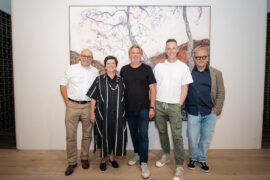
Eco Outdoor recently brought together developers, sustainability experts and local architects such as Adam Haddow to discuss design fundamentals, carbon targets and long-term thinking.
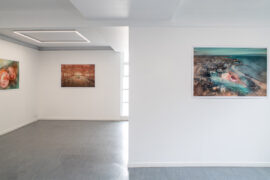
A research exhibition reimagines St Kilda’s civic spaces through soft infrastructures that enhance wellbeing and urban experience.